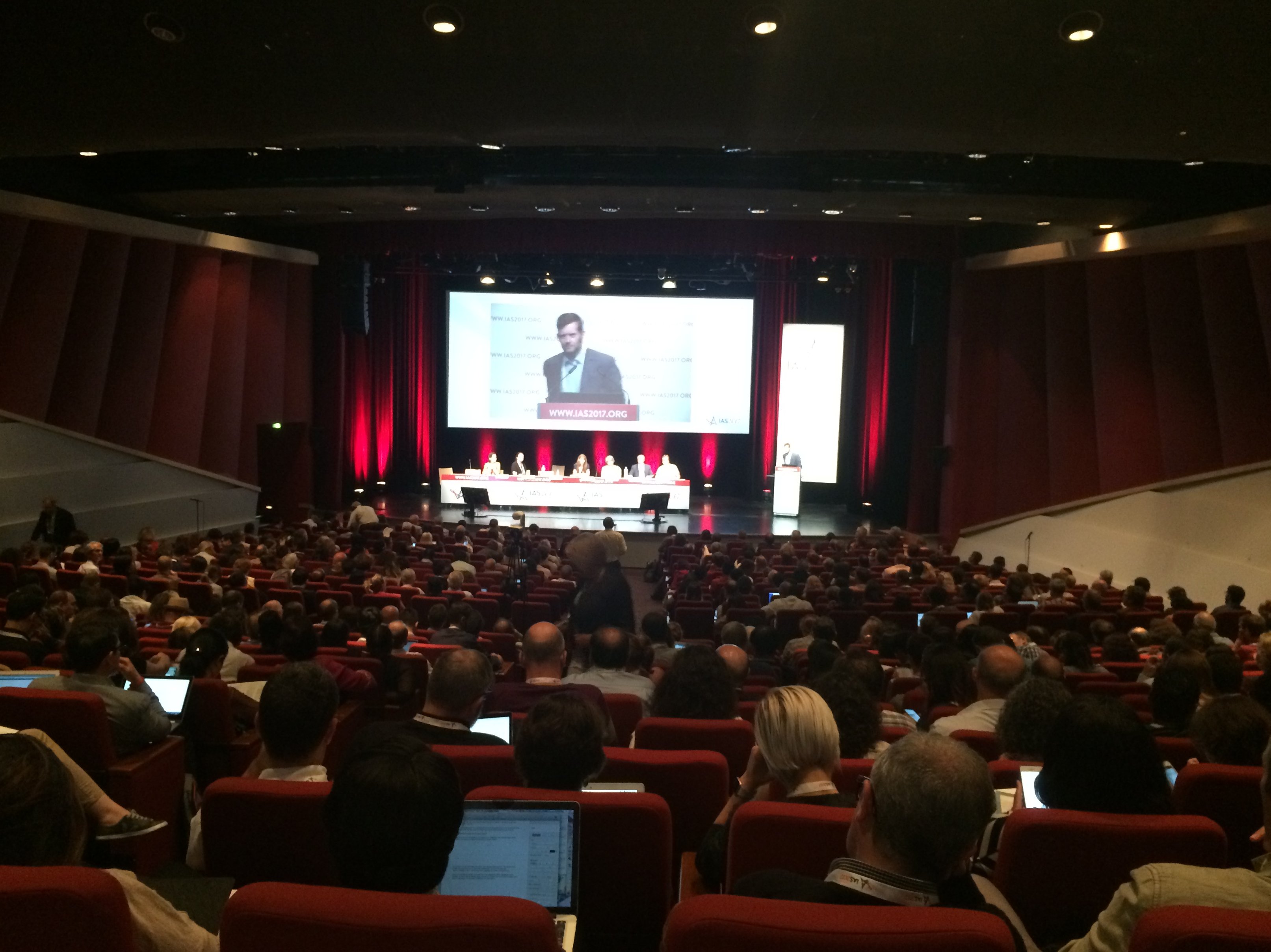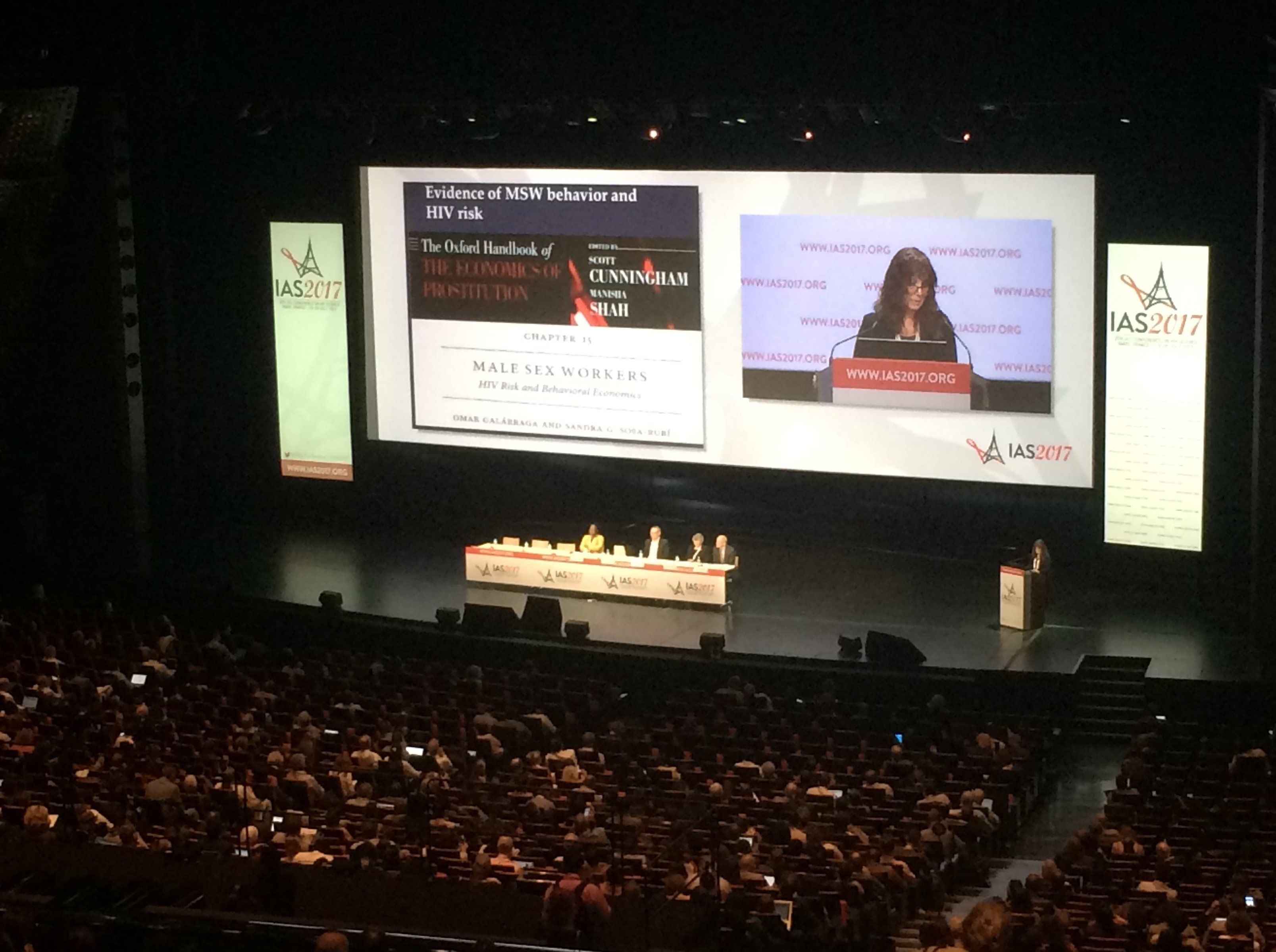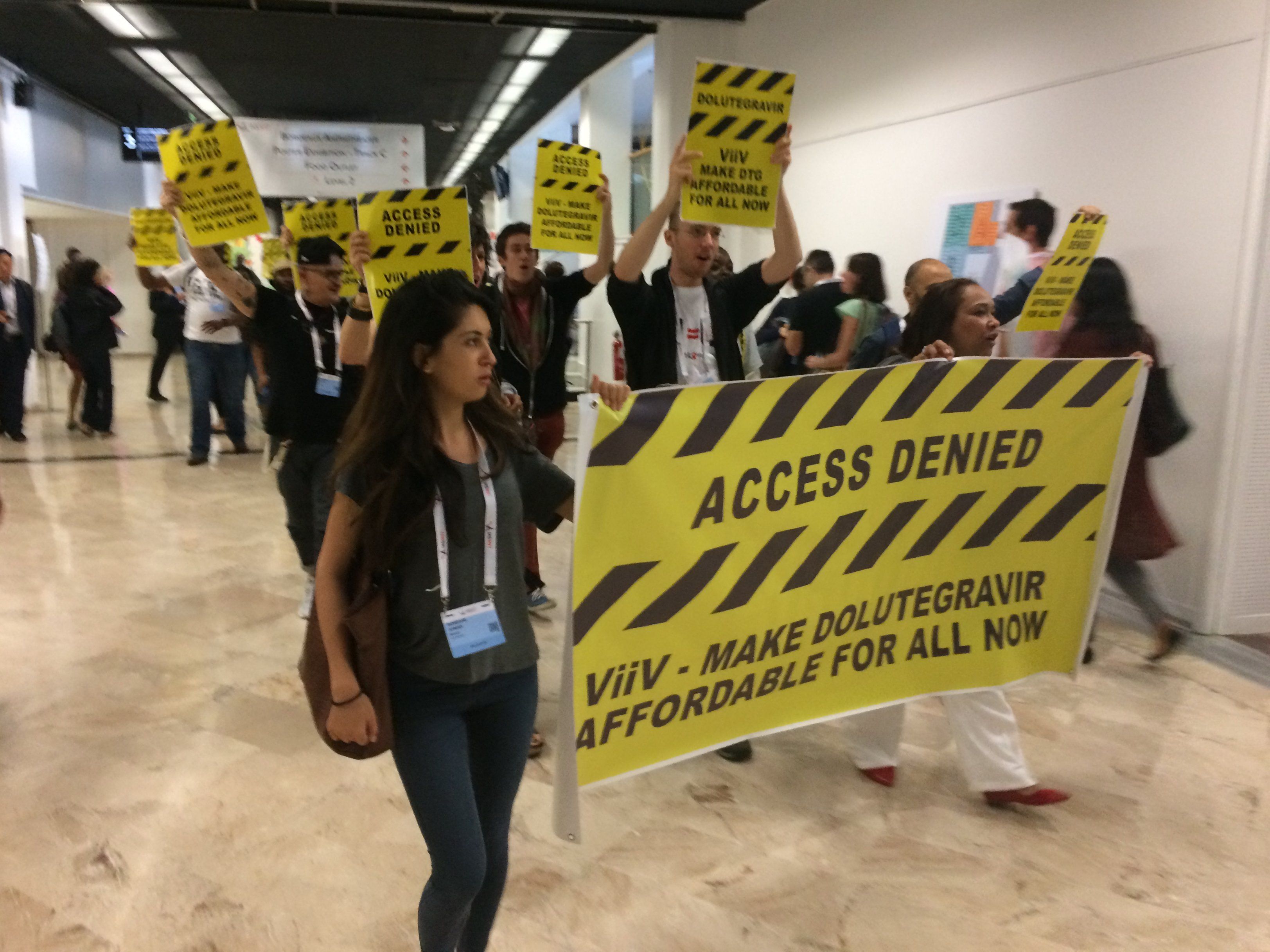LIVE FROM IAS: SUNDAY, JULY 23, 2017
Christina Psomas, MD, PhD is our « grand reporter »
Christina PSOMAS
Montpellier University Hospital
Montpellier – France
The 9th IAS Conference on HIV Science has begun today in the beautiful French capital city of Paris under the chair of Linda-Gail Bekker (South Africa) and Jean-François Delfraissy (France).
More than 6,000 participants are expected and even if this first day mainly concerned satellite symposia, the Palais des Congrès was already crowded.
The HIV Exposed Uninfected (HEU) Child Workshop (IAS/CIPHER, WHO, PHACS) saw its 3rd version since 2015 in Vancouver (SUSA05). As Amy Slogrove from the University of Cape Town, South Africa reported (SUSA0502), even if the annual incidence of HIV and ARV-exposure seems to stabilize since 2014 (UNAIDS-SPECTRUM 2016 data), in 2015 there were still 7.1 million HEU under 5 years old, of which 5.6 million were ARV-exposed. As stated by 3 systematic reviews and meta-analyses, these HEU children have a 70-100% increased risk of mortality in the first two years of life, as compared to HIV-unexposed children. Helene Côte from the University of British Columbia, Canada, presented data from the CARMA (Children and Women: AntiRetrovirals and Markers of Aging) cohort (SUSA0504) that is ongoing since 2008. Comparing blood mitochondrial DNA (mtDNA) content between HEU children diagnosed with Autism spectrum disorder (ASD), matched HEU children without ASD, HUU children with ASD and HUU controls, she demonstrated that mtDNA effects were associatedwith bothHEU status and ASDdiagnosis but she found no relationship with perinatal ARV exposure (small study sample). Conclusions of a second retrospective controlled cohort study that aimed to establish causal pathways of neurodevelopment disorders (NDs) depended on the model of the analysis used, but HEU, preterm birth and maternal factors (smoking, substance use ++) were possibly associated with NDs. Ellen Chadwick from the Northwestern University, United States (SUSA0505) described lessons learned from the SMARTT cohort (Surveillance Monitoring for ART Toxicities Study) in HEU children born to HIV-infected women. In this prospective cohort a Trigger-based design seems to be an efficient means in order to evaluate the association of Adverse Events (AEs) with in utero ARV exposure, allowing efficient surveillance in large populations, even if the role of retention to care is critical in order to assess longer term outcomes.
The session on the Next Wave of Prevention Options (SUSA15) did an update on future pipeline of products. Alex Rinehart (ViiV Healthcare, United States) presented an update on injectable prevention with cabotegravir LA (CAB LA) (SUSA1502). Preclinical and clinical data package support CAB LA use for treatment and prevention (HPTN 083 and HPTN 084 phase 3 trials, respectively in MSM/TGW and women using CAB LA 600 mg). Challenges still persist, such as date of end of trials which is dependent on background incidence and seroconversion rates, how to handle the ‘PK tail’, as well as the potential for the development of resistance. Kenneth Hugh Mayer (the Fenway Institute, United States) evaluated community perceptions of HIV prevention options (SUSA1504). Among 4638 MSM having accepted his online survey, a large majority of 78% had heard of PrEP, but only 15% have ever used it. The interest in other PrEP modalities was high, with a clear preference in infusible antibodies and injectable antiretrovirals, rather than topical rectal approaches.
The opening session welcomed delegates to the 9th edition ofthe IAS conference reminding the importance of collaboration among all actors of the fight against the HIV epidemic. Linda-Gail Bekker and Jean-François Delfraissy first commemorated the recent deaths of Mark Wainberg (McGill University, Canada) and Prudence Mabele (South African HIV activist). Agnès Buzyn (Minister of Solidarity and Health, France), Giovanna Rincon Murillo (ACCEPTESS-T, France) and Michel SIdibe (UNAIDS, Switzerland) highlighted the need for sustained efforts of all scientists, researchers, political leaders, donors and especially activists in the fight against HIV, because we haven’t yet reached the end of the epidemic. Prudence would say: “Shut up, stop talking, take action”.








